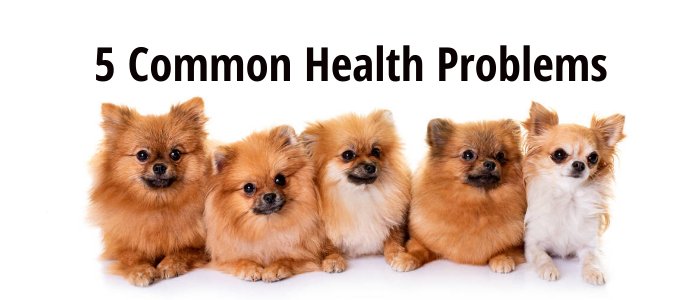Have you ever been captivated by the fluffy charm of a Pomeranian, only to wonder, “But do they shed?” If you’re considering bringing one of these adorable furballs into your home, the question of shedding might be weighing on your mind.
As a popular breed known for their vibrant personalities and fluffy double coats, Pomeranians have won the hearts of dog lovers everywhere. However, with all that fluff comes the chore of grooming and cleaning. With a plethora of information available online, it’s easy to feel overwhelmed and uncertain about what to expect in terms of shedding and overall upkeep.
Understanding whether Pomeranians shed is crucial for potential pet owners, especially if allergies or cleanliness concerns are a factor in their decision-making. While no dog is completely hypoallergenic, knowing the ins and outs of Pomeranian grooming can make a significant difference in your home environment. Join us as we delve into the shedding habits of Pomeranians, uncover expert grooming tips, and explore how to manage their fluffy coats, ensuring you and your future furry friend can coexist happily!

Do Pomeranians Shed?
Yes, Pomeranians do shed, although the amount can vary based on factors such as genetics, health, and seasonal changes. They have a double coat consisting of a soft undercoat and a longer outer coat, which contributes to their fluffy appearance.
Typically, Pomeranians experience a heavier shedding period during spring and fall as they transition between winter and summer coats. Regular grooming, including brushing several times a week, can help manage shedding and keep their coat healthy. Despite the shedding, many Pomeranian owners find their energetic and playful nature to be well worth the extra grooming effort.
How Bad Do Pomeranians Shed?
Pomeranians are known to have a thick double coat, which means they do shed quite a bit, particularly during seasonal changes when they “blow” their coat. This shedding can be more pronounced in the spring and fall, requiring regular grooming to manage the loose fur.
On a day-to-day basis, Pomeranians shed moderately, so while they aren’t considered hypoallergenic, diligent brushing can help keep the shedding under control and minimize the amount of fur in your home. Despite their fluffiness, many owners find that the grooming routine can strengthen the bond with their pet and keep them looking their best.
Do Pomeranians Shed a Lot?
Pomeranians are known to shed a moderate amount of fur, particularly during seasonal changes. This breed has a double coat consisting of a soft undercoat and a longer outer coat, which means they typically experience heavier shedding during spring and fall as they adjust to temperature fluctuations.
Regular grooming, including brushing several times a week, can help manage their shedding and keep their coat healthy. While Pomeranians don’t shed as much as some larger breeds, potential owners should be prepared for some fur around the house and consider how this may affect those with allergies.
Facts and Myths about Pomeranian Shedding
1. The Pomeranian is a relatively small dog breed, typically weighing four to seven pounds. They are usually active and agile dogs. The Pomeranian sheds year round but typically do not require professional grooming.
2. Although the Pomeranian is a hypoallergenic dog, they do shed hair and it can become messy in the house or car. However, this hairless shedding dog breed is known for its low-maintenance needs and gentle personality which makes them ideal for children and people with allergies.
3. There are many myths surrounding Pomeranian shedding. Some of these include: “Pomeranians don’t shed at all”, “Pomeranian hairballs can cause health problems”, “You need to brush your Pomeranian every day”, “It takes time to train your Pomeranian to stop shedding”, “My Pomeranian will never stop shedding”, etc. These myths are simply untrue.
They may be adorable, but they’re not immune from shedding! Their shedding isn’t quite as heavy as some others, but they still shed significantly. Because they’re probably among the hairiest of the smaller dogs, they may be one of the worst for shedding small dogs. Hopefully, this may have cleared a log of things.

Top 3 Ways to Keep Your Dog’s Coat Healthy
A dog’s coat is one of the most important parts of its body that you need to take care of, and there are multiple ways to do it. This article will go over three common ways that people use in order to keep a dog’s coat healthy.
Many times a dog’s coat can get dirty or tangled, and if not taken care of it can lead to a variety of problems. In order to prevent this from happening, make sure you brush your dog often and wash them when they need it. If your dog does have a problem with its coat, you should research the issue online or consult with your vet for help.
Here are the top 3 ways to keep your dog’s Coat healthy:
1. Brush Them Often
Brushing your dog’s coat regularly helps maintain its appearance and keeps it looking clean. It also helps remove any dead skin cells on the surface of the coat. Brushing your dog regularly also helps remove dirt and debris that could clog up their fur. You should always brush your dog’s entire coat thoroughly, including the ears, tail, legs, belly, chest, back, neck, face, and head.

2. Wash Them Regularly
Washing your dog’s coats is another way to ensure that they stay clean and look good. Make sure you wash your dog’s whole coat, including the ears, tails, legs, belly, chests, backs, necks, faces, and heads. Washing your dog’s coats helps remove excess dirt and grime that accumulates during exercise, playtime, and other activities.
3. Use Conditioning Products
Conditioners are products that are designed specifically to add moisture to your dog’s dry coat. Using conditioners can help improve the quality of your dog’s hair and keep it soft and shiny. When using conditioning products, make sure you follow the directions carefully so that you don’t end up damaging your dog’s fur by applying too much product.
5 Medical Reasons Why Poms Shed So Much
The quantity of hair that a dog sheds is often associated with the dog’s breed. For example, dogs with short coats are often not heavy shedders while longer-haired breeds are.
Hair loss in dogs and humans is usually due to genetics or stress. Some breeds of dogs are predisposed to excessive shedding, so they’ll have more hair loss than other breeds.
The best way to prevent excessive shedding is to regularly brush your dog’s coat. This will remove the old and dull hairs and make way for new ones!
If you notice that your dog has lost a lot of hair, contact your veterinarian immediately. There are many medical conditions that cause hair loss, such as hypothyroidism, diabetes, cancer, and parasites.
5 Common Health Problems That Cause Dogs To Shed

There are several health issues that can cause a dog to lose his/her hair. These include thyroid disease, allergies, fleas, worms, and cancer.
1. Hypothyroidism
Hyperthyroidism is a condition in which the thyroid gland produces too much thyroid hormone. It can be caused by immune-mediated disease, cancer, or exposure to radiation.
Causes of hypothyroidism in dogs
- Hypothyroidism is hereditary and may be due to genetic defects in the dog’s thyroid-stimulating hormone receptor (TSHR).
- Hypothyroidism may also occur due to autoimmune damage to the cells that make up the canine thyroid.
2. Allergies
Dogs who suffer from allergies shed excessively because their immune systems are overactive. Allergic reactions can occur anywhere on the body, but the most common areas are the nose, eyes, feet, mouth, and stomach. Many pet owners are not aware of the fact that their dog may be suffering from allergies.
This is because, like people, dogs can develop allergic reactions to different substances in their environment. These allergies are caused by an overreaction of the immune system to normally harmless substances.
There are two types of allergies that affect dogs: food allergies and skin allergies (contact allergy). Skin allergies can be caused by flea bites, mites, or other environmental allergens. Food allergy symptoms include itching on the face and paws, hair loss on the stomach and back, ear infections, and more serious cases that will even lead to vomiting or diarrhea.
3. Skin Parasites or Fleas
There are many reasons why dogs shed. Some of these include skin parasites such as fleas or ticks, food allergies, and other conditions. Some dogs may show signs of shedding because they have an excess of hair that is not being groomed properly or because their skin is irritated by something it has come into contact with.
When a dog’s skin has been infected by fleas, ticks, or other parasites, they will lose hair because the infection causes irritation to the skin which releases oils onto the coat causing it to become dull. This can be easily seen in certain breeds of dogs such as terriers who are prone to excessive scratching and/or licking themselves due to their body type.
4. Diabetes Mellitus
Dogs have been classified as “the perfect pet” by many people. They are really easy to take care of and they don’t need a lot of space either. Apart from their physical benefits, they also have a lot of mental benefits. A study has found that living with a dog can improve your life expectancy and lower the risk of cardiovascular disease.
Dogs have been given so much attention because they really do provide so much for us humans, which is why so many people call them the perfect pet. However, there are some negatives to having one at home too, like an increased risk of obesity and diabetes mellitus (a metabolic disorder).
One reason for this is because dogs go through periods where their pancreas produce insulin but then suddenly stop doing it due to something like.
5. Thyroid Disease
When a dog’s thyroid gland doesn’t produce enough hormones, he may experience hair loss. The most common symptoms of thyroid disease are weight gain, lethargy, depression, vomiting, diarrhea, and increased thirst. Your veterinarian can diagnose your dog with thyroid disease based on these signs.
How to Get Rid of Fleas on Dogs?
Flea infestation in pets is an unfortunate fact of life. It is estimated that fleas live on approximately 30 percent of the world’s population.
If you have a pet, then you know how difficult it can be to rid yourself of fleas. You’ve tried everything from sprays to shampoos to even using special foods. But nothing seems to work.
So what’s left?
Well, there are actually several options available to you. The first thing you want to do is try to find out exactly where the fleas are coming from. Are they inside or outside?
Do they come from your home or your neighbors’? And are they just hanging around your yard or are they moving into your home? Once you figure out where the fleas are originating from, you can start looking for solutions.
Conclusion
The fur is a natural defense system for the canine that helps to protect them from the cold and other elements. In order to keep your dog warm, you will need to groom it from time to time.
In this article, we have given you some tips on how to stop your Pomeranian from shedding too much hair. You can use a vacuum cleaner or a lint roller if it is shedding a lot of hair, but make sure that you brush its coat beforehand.
A dog with an undercoat sheds more than those with an overcoat and the type of coat will also depend on their genetics. Ultimately, brushing their coat regularly will help minimize the amount of hair.
Read More:


